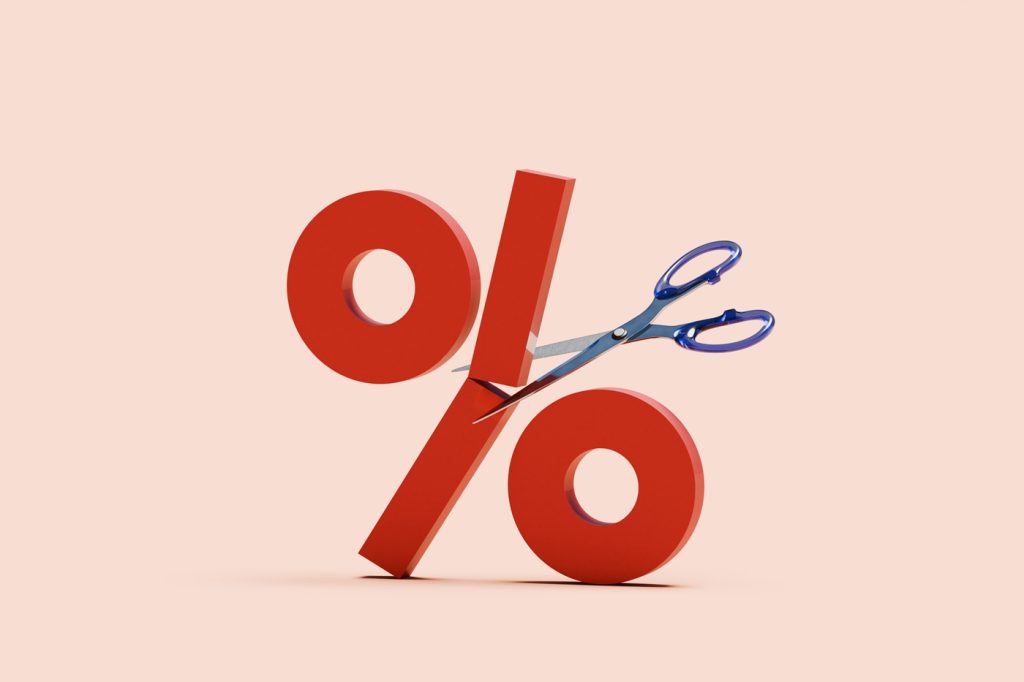
The updated outlook marks a departure from Scotiabank’s long-standing view that the BoC had already reached its terminal rate and would remain on hold at 2.75% throughout its forecast horizon.
In a new report, Scotiabank’s economists say the outlook for growth is dimming quickly, thanks in large part to a “dramatic escalation of America’s war on trade.”
While Canada has avoided the steepest tariffs so far, the spillover from weaker U.S. growth and softer commodity prices is already being felt.
Economic risks are rising on both sides of the border
In the U.S., Scotiabank says 100-year-high tariffs are “already causing a material slowdown in economic activity that will extend well into next year.”
And while tariffs against Canadian goods haven’t changed much since March, the economic damage elsewhere is weighing heavily.
“We now forecast the Federal Reserve will keep its policy rate at the current level through the remainder of the year given the inflationary consequences of its tariff policy,” the report says. “The Bank of Canada is currently forecast to keep its rate at 2.75% for the remainder of the year, but that assessment may change as we see how inflation and growth evolve in coming months.”
While a full-blown recession isn’t Scotiabank’s base case—unlike others like Oxford Economics—it admits it’s a close call.
“There is no doubt that economies will flirt with recession owing to the tariffs and associated uncertainty,” the economists warn.
For Canada, they now forecast GDP growth slowing to just 0.7% in 2026, with the unemployment rate rising to 7.2% as the economy struggles to regain momentum.
BoC cuts on the horizon—but not until 2026, Scotiabank says
With slower growth on the way, Scotiabank says it now expects the Bank of Canada to start cutting interest rates next year.
“We assume that Governor Macklem keeps rates unchanged for the remainder of the year, but this depends critically on the evolution of the global trade war, the magnitude of the decline in U.S. economic activity, and the Canadian government’s response to it,” the team said.
“If the U.S. or Canadian economies weaken more than expected, the BoC would likely lower rates,” they added.
Under their base case, the Bank of Canada would lower its policy rate by a total of 75 basis points in 2026, helping to support a still-fragile recovery.
That puts Scotiabank at odds with most other major banks, including BMO, TD and CIBC, which expect the central bank to continue cutting rates this year before moving to the sidelines for the foreseeable future.
While National Bank and RBC also expect two to three quarter-point rate cuts in 2025, they both expect the Bank of Canada to hike once or twice in 2026 as economic conditions improve.
Inflation will be a tough balancing act
But even as Scotiabank expects the BoC to stay on hold this year and begin easing in 2026, the path forward won’t be simple. A key challenge, they say, is that inflation isn’t going away quietly—especially with tariffs driving up costs across the board.
“It will be challenging for central banks, including Canada’s, to ensure that the one-off nature of tariff shocks does not lead to rising inflation,” they said.
Despite those risks, Scotiabank still sees inflation gradually easing, with CPI growth slowing from 2.3% in 2025 to 2.1% by 2026—close to the Bank of Canada’s 2% target. That assumes the economy continues to cool and the tariff impact doesn’t spiral.
At the same time, the bank warns the forecast could shift quickly. If trade tensions ease, “it might be possible for the economy to rebound sharply in the second half of this year,” they said.
But if the trade war escalates and tariffs climb even higher, “the economic outlook would be significantly worse,” they said.
Visited 23 times, 23 visit(s) today
bank of canada rate forecast big bank forecasts BoC BoC rate forecast inflation scotia scotiabank tariffs trade war
Last modified: April 29, 2025

